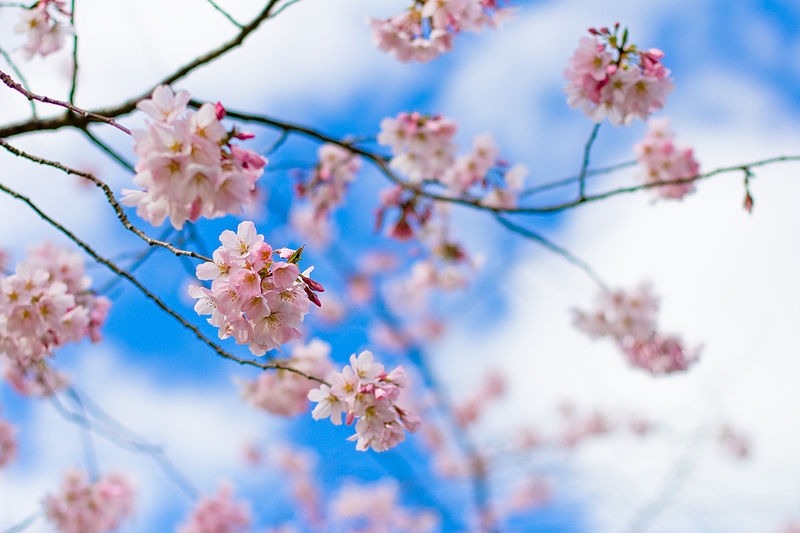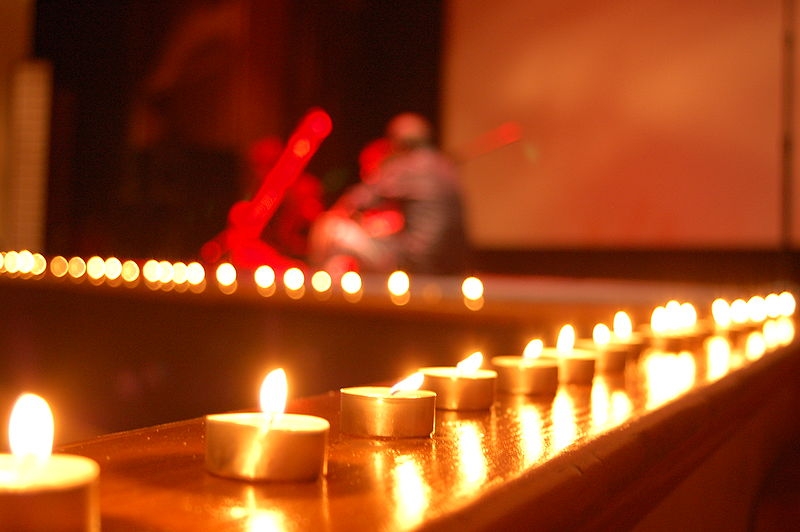
Festivals have a rich tradition throughout Asian cultures, whether the festival originated out of a shared agrarian heritage, as a celebration of a successful harvest, or as an opportunity for families to reunite and offer prayers for future health and prosperity. There are ethnic festivals they have celebrated for thousands of years and have become so ingrained into the culture that people may not even be aware of their origins. Nevertheless, they serve as an annual reinforcement of the connection to family and ancient traditions.
“Chinese New Year, or the Spring Festival, is the most important festival in China,” says Valda Hsu, born and raised in Taiwan. The two-week celebration begins on the first day of the first lunar month. “All the major Chinese festivals follow the lunar calendar,” says Hsu. In 2010, Chinese New Year begins on February 14th and culminates 15 days later in the Lantern Festival, when people hang lanterns at the front gates of their homes to honor Buddha.
“Chinese New Year is not only the most important festival, but it is also the most spectacular,” says Hsu. The holiday, marked by the deafening bang of thousands of exploding firecrackers, which are set off to scare the ancient, mystical beast Nine. Magnificent, flowing silk dragons, symbols of power and nobility, dance in parades through the streets. Elders give red (a lucky color) envelopes stuffed with cash to bowing children. Korea celebrates the Chinese New Year as Seol-nal, and in Vietnam as Tet. No matter where the celebrations occur, the holiday is a time when families gather, from near and far, to share opulent feasts. “It’s a time when you return to your roots, to the home of your parents, or to your ancestral lands,” says Hsu.
Enclaves of Chinese people throughout the world celebrate the New Year with opulent parades in places like Vancouver and New York. The parade in San Francisco is one of the largest celebrations of Asian culture outside of Asia. It is one of the top ten parades in the world and is one of the few remaining illuminated parades.
The Mid-Autumn Festival is held on the 15th day of the 8th lunar month throughout many countries in Asia. In Vietnam, the holiday is known as Tet-Trung-Thu, and it is a day centered on children. In Vietnamese folklore, the children were left to play by themselves while the parents worked long hours bringing in the harvest. To make up for lost time, parents use this festival as an opportunity to show their love and appreciation for their children.
The full moon plays center stage in the traditions that developed around the autumn festival. “Many of the celebrations take place outdoors, under the light of the bright moon,” says Hsu. “Families gather together to eat traditional moon cakes and children sit at the knee of their elders and listen to their stories.” The festival has also developed into a kind of Valentine’s Day in China. Young girls in China bow to the old man in the moon, whom, it is said, decides who they will marry.
 The most popular festival in Japan is Sakura, the cherry blossom festival, which heralds the coming of spring, which happens in late March or early April, during the brief time that the blossoms appear. The daily weather forecast in Japan includes the forecast for the peak of the blossoms. Juri Smick grew up in Japan. One of her most treasured memories is of the cherry blossom festival held in her small town. “I looked forward to the festival every year,” says Smick. “At night, they turned on hanging lanterns in each of the cherry trees. I’ll never forget the smell of the blossoms when the warm wind blew through them.” The cherry blossoms have a deeper cultural significance as well. Since they fall to the ground and disappear in only a few weeks, their nature echoes the ancient Japanese belief in the short, transitory nature of youth and life itself.
The most popular festival in Japan is Sakura, the cherry blossom festival, which heralds the coming of spring, which happens in late March or early April, during the brief time that the blossoms appear. The daily weather forecast in Japan includes the forecast for the peak of the blossoms. Juri Smick grew up in Japan. One of her most treasured memories is of the cherry blossom festival held in her small town. “I looked forward to the festival every year,” says Smick. “At night, they turned on hanging lanterns in each of the cherry trees. I’ll never forget the smell of the blossoms when the warm wind blew through them.” The cherry blossoms have a deeper cultural significance as well. Since they fall to the ground and disappear in only a few weeks, their nature echoes the ancient Japanese belief in the short, transitory nature of youth and life itself.
In Washington, DC, the annual Cherry Blossom Festival is held for two weeks every spring to commemorate the 1912 gift of 3,000 cherry trees to the city from Mayor Yukio Ozaki of Tokyo. The climax of the festival is the Sakura Matsuri Japanese Street Festival, the largest one-day exhibition of Japanese culture in the United States. Across the country, Japan American Societies host similar annual celebrations highlighting elements from traditional Japanese festivals, like the Hina Matsuri, or the doll festival. “Families who have daughters celebrate their girls by displaying their family set of Hina dolls,” says Smick. “Traditionally, families must put the dolls away after March 3; otherwise their girl’s marriage will be late.”
Several Japanese festivals are religious-based and held at shrines. On New Year’s Eve, people in Japan go to a Buddhist temple to hear the 108 bongs of the bell, which is supposed to drive off the 108 sins of the human condition. Years are traditionally viewed as completely separate, with each New Year providing a fresh start. Consequently, all duties are supposed to be completed by the end of the year, while bonenkai parties (“year forgetting parties") are held with the purpose of leaving the old year's worries and troubles behind. January 1 is a very auspicious day, best started by viewing the New Year’s first sunrise (hatsu-hinode), and visiting a shrine. The day is supposed to be full of joy and free of stress and anger.
 Like Japan, festivals in India center on worship and prayer to the gods, but they also share an agrarian tradition with the Chinese. Dussehra, also known as Vijayadashmi, is a popular festival celebrated by Hindus all over India. The legend is that on this day, Lord Rama killed the demon-king, Ravana and rescued his abducted wife, Sita. The story signifies the triumph of good over evil. Fairs and parades held with giant effigies of the ten-headed Ravana are set aflame. In burning the effigies, the people are asked to burn the evil within them, and thus follow the path of truth and goodness. Dussehra is celebrated in the lunar month of Ashwin (usually in September or October in India), marking the end of the hot summer and the beginning of the harvest season. Religious rituals are performed to invoke cosmic forces that are believed to rejuvenate the soil.
Like Japan, festivals in India center on worship and prayer to the gods, but they also share an agrarian tradition with the Chinese. Dussehra, also known as Vijayadashmi, is a popular festival celebrated by Hindus all over India. The legend is that on this day, Lord Rama killed the demon-king, Ravana and rescued his abducted wife, Sita. The story signifies the triumph of good over evil. Fairs and parades held with giant effigies of the ten-headed Ravana are set aflame. In burning the effigies, the people are asked to burn the evil within them, and thus follow the path of truth and goodness. Dussehra is celebrated in the lunar month of Ashwin (usually in September or October in India), marking the end of the hot summer and the beginning of the harvest season. Religious rituals are performed to invoke cosmic forces that are believed to rejuvenate the soil.
Diwali, or the Festival of Lights, is the biggest of all Hindu festivals, but also celebrated by Buddhists, Sikhs, and Jains throughout India. This five-day holiday comes exactly 20 days after Dussehra and usually falls in October or November. Diwali commemorates the New Year, according to the Hindu calendar. Rows and rows of candles and lamps are lit as a greeting and welcome to Laksmi, the goddess of wealth. Diwali means as much to Hindus as Christmas does to Christians.
Pongal is the only Hindu festival that follows a solar calendar and celebrated on the fourteenth of January every year. Pongal has astronomical significance; it marks the beginning of Uttarayana, the sun’s movement northward for a six-month pe riod. Pongal also signals the end of the traditional farming season, giving farmers a break from their monotonous routine. The festival celebration continues for four days, and filled with visits to family, thanks for a bountiful harvest, and prayers and offerings made in temples.
riod. Pongal also signals the end of the traditional farming season, giving farmers a break from their monotonous routine. The festival celebration continues for four days, and filled with visits to family, thanks for a bountiful harvest, and prayers and offerings made in temples.
The spring festival of Holi, also called the Festival of Colors, and celebrated on the last full moon day of the Hindu month of Phalguna, which falls in late February or early March. It is a celebration of good harvests and the fertility of the land. Themain day, marked by people throwing colored powder and colored water at each other, is a tradition that originates in the legend of a similar prank played by the god, Krishna. Spirited revelry marks this holiday. Caste differences are set aside, and behavior otherwise be considered inappropriate, is overlooked. In fact, on the days of Holi, you can get away with almost anything by saying, “Don’t mind, it’s Holi!” Bonfires lit on street corners cleanse the air of evil spirits, and symbolize the destruction of the wicked Holika, for whom the festival was named.
Although many Asian families have moved far away from their homeland, these annual ethnic festival celebrations evoke dearly held memories. “I still remember walking under the bright light of the moon with my father during the Harvest festival, listening to his stories,” says Hsu. Across the globe, festivals provide Asian families to come together to honor and commemorate their rich cultural history.
